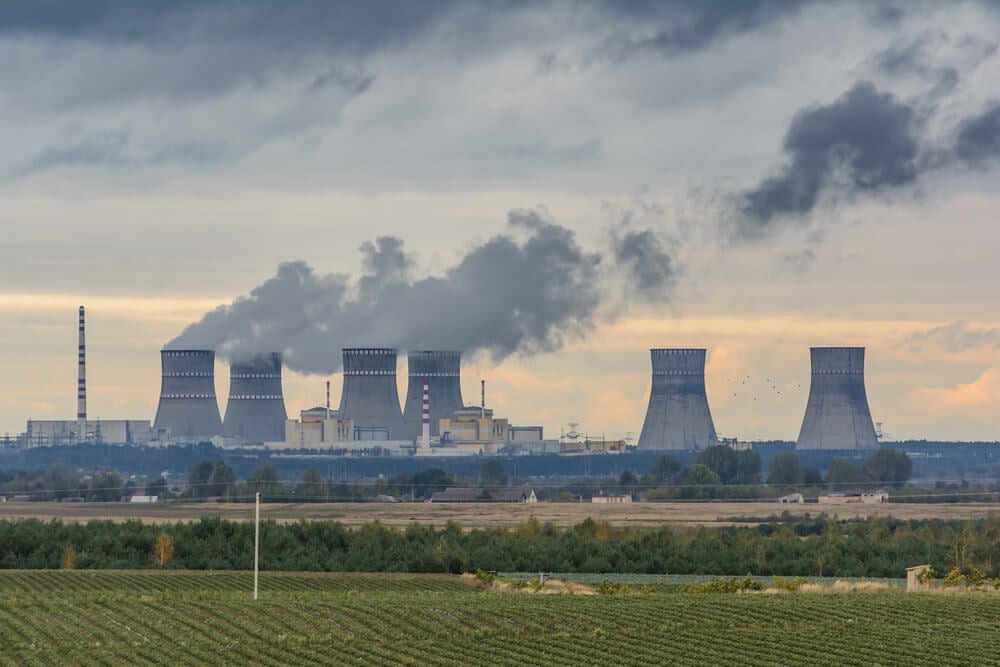In 1986, the Soviet regime suppressed the truth about the Chornobyl catastrophe.
Learning from that tragedy, Ukraine’s government now vigilantly monitors its nuclear power plants amid the ongoing war, sounding global alarms about potential nuclear risks.
Yet, the critical question isn’t just awareness—it’s whether the world has effective mechanisms to resolve these perilous challenges.
Russia’s terrible overnight assault on 8 November targeted critical substations powering the Khmelnytskyi and Rivne nuclear power plants.
“These attacks jeopardise nuclear safety, disrupt power supplies for millions as winter approaches, and exhibit characteristics of crimes against humanity,” tweeted a lawyer on war crimes and former Deputy Prosecutor General of Ukraine, Gyunduz Mamedov.
Ukrainian Foreign Minister Andrii Sybiha urged an immediate IAEA Board of Governors meeting.
"Russia’s deliberate attacks on Ukraine’s energy infrastructure threaten Europe’s nuclear safety, demanding urgent global action," Sybiha declared.
He called on the IAEA to swiftly address the crisis and implement safeguards against further risks. Sybiha also urged nations committed to nuclear security, including China and India, to press Russia to halt its assaults.
Only unified pressure can stop nuclear blackmail
At the moment, after six months of stalled efforts, the IAEA secured a breakthrough at Ukraine’s Russian-occupied Zaporizhzhia Nuclear Power Plant.
A local ceasefire enabled repairs to the second power line, restoring critical backup power.
“As the damaged sections of the power lines were located in an active combat zone, this required complex negotiations with both sides to establish carefully coordinated temporary truce arrangements so that their technicians could work without risking their own lives. It took several weeks to get to this point, with the plant once again having access to two power lines. It is a good day for nuclear safety and security, although the overall situation remains highly precarious,” Director General Rafael Mariano Grossi said.
The war raises nuclear threat not from nuclear weapons but from deliberate attacks crippling power infrastructure
This war raises nuclear threat not from nuclear weapons but from deliberate attacks crippling power infrastructure.
Ukraine has four active nuclear power plants, which are the Pivdennoukrainsk, Rivne, Khmelnytskyi, and Zaporizhzhia NPPs. Together, these plants contain a total of 15 operational nuclear reactors, with the Zaporizhzhia plant having the largest number of reactors at six.
Russia is targeting substations that power nuclear power plants. If Ukraine's nuclear power plants lose external power, backup diesel generators activate to cool reactors and spent fuel.
Failure risks meltdown, releasing radiation across Europe—echoing Fukushima or Chornobyl.
"Only unified international pressure can end Moscow’s reckless nuclear blackmail and prevent a catastrophic disaster," said Mr Subiha in his warnings about the potential tragedy.
The era of peace through strength has returned
Yet even as Kyiv calls on the world to stop Russian strikes on nuclear sites, the global stage beyond Ukraine is plunging into its own crisis of escalation.
The era of “peace through strength” has returned. Putin is once again flexing his nuclear muscles, showcasing Russia’s new systems such as its experimental nuclear-powered underwater torpedo called Poseidon—allegedly capable of a range exceeding 9 650 km.
 Nuclear safety has evolved far beyond reactor cooling or non-proliferation agreements - Rivne Nuclear Power Plant
Nuclear safety has evolved far beyond reactor cooling or non-proliferation agreements - Rivne Nuclear Power Plant
The U.S. has responded too. At the end of October, U.S. President Donald Trump instructed the military to immediately restart nuclear-weapons testing after a 33-year hiatus, a move widely seen as a message to both Russia and China.
He declared: “Because of other countries’ testing programs, I have instructed the Department of War to start testing our nuclear weapons on an equal basis. That process will begin immediately.”
The administration remains vague, however, on whether this includes full underground detonation tests.
Compounding the danger, China is quietly accelerating its missile and nuclear-armament buildup.
A recent investigation found that over 60 % of China’s 136 missile-related facilities have expanded since 2020, with the total area of these sites growing by more than 2 million square meters.
Satellite imagery shows new silos, assembly towers, and bunkers—evidence of a sustained arms race that now involves all major nuclear powers.
Nuclear safety has evolved far beyond reactor cooling or non-proliferation agreements.
Today, it rests on the technical expertise and ethical commitment of those managing and maintaining nuclear facilities, alongside the political will of global leaders.
Regrettably, it looks like some prioritise their capacity to unleash catastrophic power rather than safeguarding humanity. This means Ukraine's pleas may fall on deaf ears.
In the new race for global leadership, victory will belong to those who can safeguard their citizens and methodically foster economic stability. Yet, while Russian aggression persists, such ambitions remain unattainable in Europe.